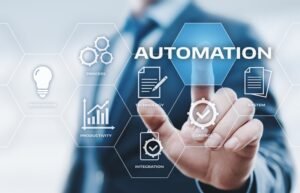In today’s fast-paced business environment, human resources (HR) departments face the daunting challenge of managing complex administrative tasks while simultaneously supporting the strategic objectives of the organization. To navigate this dynamic landscape, HR professionals are increasingly turning to automated human resources systems to streamline processes, enhance efficiency, and empower employees. In this article, we delve into the transformative potential of automated HR systems and explore how they are reshaping the future of HR management.
The Evolution of HR Automation
The evolution of technology has profoundly impacted the field of human resources, revolutionizing traditional HR practices and processes. Gone are the days of manual paperwork and cumbersome spreadsheets; today’s HR departments rely on sophisticated automated systems to manage everything from recruitment and onboarding to performance evaluation and talent development. By leveraging cutting-edge technologies such as artificial intelligence (AI), machine learning (ML), and cloud computing, automated HR systems empower organizations to optimize workforce management, improve decision-making, and drive business outcomes.
Recruitment and Talent Acquisition
Recruitment is the lifeblood of any organization, and automated HR systems play a crucial role in streamlining the hiring process and attracting top talent. From job posting and candidate screening to interview scheduling and offer management, automated recruitment platforms offer end-to-end solutions that enable HR professionals to identify, engage, and onboard candidates efficiently. AI-powered algorithms can analyze resumes, assess candidate suitability, and even predict job fit based on historical data and performance metrics. By automating repetitive tasks and leveraging predictive analytics, organizations can expedite the recruitment process, reduce time-to-hire, and secure the best candidates for the job.
Onboarding and Employee Engagement
Effective onboarding is essential for fostering employee engagement, promoting retention, and ensuring long-term success within an organization. Automated HR systems facilitate seamless onboarding experiences by providing new hires with access to essential resources, training materials, and organizational information through centralized portals and self-service platforms. Moreover, automated onboarding workflows can automate administrative tasks such as paperwork, document processing, and compliance training, freeing up HR professionals to focus on building relationships and supporting new employees during their transition. By delivering personalized onboarding experiences and fostering a culture of inclusion and belonging, organizations can enhance employee engagement and accelerate time-to-productivity.
Performance Management and Feedback
Performance management is a critical aspect of HR management, influencing employee development, productivity, and organizational success. Automated HR systems enable organizations to streamline performance evaluation processes, track key performance metrics, and provide timely feedback and coaching to employees. Performance management platforms leverage data analytics and real-time reporting capabilities to assess employee performance objectively, identify areas for improvement, and recognize high performers. Additionally, automated feedback mechanisms enable managers and employees to engage in continuous dialogue, set goals, and monitor progress throughout the performance cycle, fostering a culture of accountability and continuous improvement.
Learning and Development
Continuous learning and development are essential for nurturing talent, driving innovation, and maintaining a competitive edge in today’s knowledge economy. Automated HR systems facilitate employee training and development initiatives by providing access to online learning resources, courses, and certifications through learning management systems (LMS). By leveraging AI-driven recommendation engines and personalized learning pathways, organizations can tailor training programs to individual employee needs, preferences, and career aspirations. Furthermore, automated tracking and reporting functionalities enable HR professionals to monitor learning progress, track skill development, and measure the impact of training investments on organizational performance.
Compliance and Regulatory Requirements
Compliance with labor laws, regulations, and industry standards is a top priority for HR departments, particularly in highly regulated industries such as healthcare, finance, and manufacturing. Automated HR systems help organizations navigate complex compliance requirements by centralizing data, automating compliance checks, and generating audit trails and reports. From managing employee records and payroll data to tracking time and attendance, automated HR systems ensure accuracy, consistency, and transparency in compliance-related processes. Moreover, automated notifications and alerts help organizations stay informed about regulatory changes and deadlines, enabling proactive risk management and compliance management strategies.
Data Security and Privacy
As custodians of sensitive employee information, HR departments must prioritize data security and privacy to protect employee confidentiality and comply with privacy regulations such as the General Data Protection Regulation (GDPR) and the California Consumer Privacy Act (CCPA). Automated HR systems employ robust encryption protocols, access controls, and data masking techniques to safeguard employee data from unauthorized access, breaches, and cyber threats. Additionally, compliance with industry standards and best practices ensures that HR systems adhere to stringent security requirements and undergo regular audits and assessments to maintain data integrity and confidentiality.
Conclusion
In conclusion, automated human resources systems represent a transformative force in the field of HR management, enabling organizations to optimize processes, enhance efficiency, and empower employees. From recruitment and onboarding to performance management and learning and development, automated HR systems offer end-to-end solutions that streamline administrative tasks, improve decision-making, and drive business outcomes. However, realizing the full potential of automated HR systems requires a strategic approach to implementation, collaboration, and change management. By embracing innovation, investing in employee development, and fostering a culture of continuous improvement, organizations can harness the power of automation to transform HR management and achieve sustainable growth and success in the digital age.
